Recently I had the honor of talking with Sara, a teacher in Iowa, whose students have started using inquiry charts. In a nutshell, these charts help students determine what is important and organize their notes as they read-view-listen to multiple sources. (If you’re not familiar with inquiry charts, please check out an article I wrote for ASCD’s EL The Case for Multiple Texts or this blog entry.)
Sara’s students were engaged in a shared inquiry into the giant squid. This was their first experience with an inquiry chart – so everyone was using the same research questions and the same sources. Below are two examples of their charts. Notice the questions are across the top and the sources are listed in the first column.
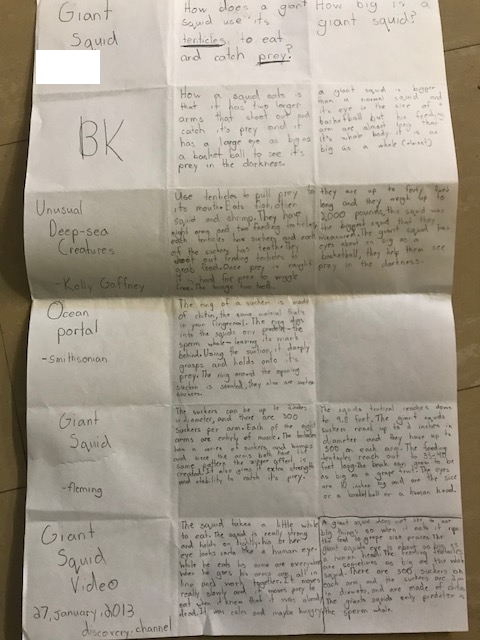
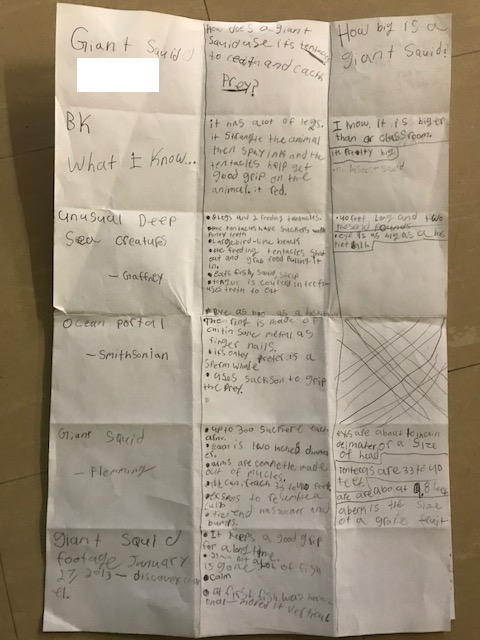
I asked Sara to share what she noticed about the students during this experience and as we talked, two important points jumped out at me.
*The questions on the inquiry chart should be revised if your students realize the questions are not clear enough or are too big. Sara started with the question, “How does the giant squid catch and eat its food?” As they read-viewed the sources, though, they realized there was too much information to take notes on and explain in response to this question. Sara and the students reformulated the question to “How does the squid use its tentacles to catch prey?” The students were okay with changing the question–because it made the task more manageable and helped them determine what was important. More importantly, the students LIKED that the first question didn’t work, they got to see their teacher problem-solve and they had the opportunity to help her problem solve. Formulating and reformulating the questions together has become a part of the process for the students.
BTW – this happens a lot. In my experience, developing “perfect” questions for the inquiry chart is hard. I have changed many a question once I’ve seen what students do with it. Totally okay. We want them to see the process and engage in this for themselves.
*Some sources may have more to offer students than we realize–especially when our students have started thinking across sources. I have looked at sources and thought, “Oh, no. They won’t get anything from that” and then been super surprised at what they noticed (that basically I didn’t!!!)Sara wanted to show the students a video of a giant squid. Finding a good video is hard when there have only been a few sightings of this mysterious creature. (Most of what we know is from examining dead squid that wash up on shore.) She found a video of a giant squid eating a fish. The video is raw footage taken by scientists with no narration or other helpful features. Sara thought it would be hard for the students to glean any new information from this, but it would be cool for them to watch. She was surprised at how wrong she was. They noticed all sorts of details in this video — because they had already learned so much from other sources. Students noticed that the fish didn’t appear to change much in size over the course of the video, but then one reminded the others about how they’d read that a squid only eats grape-size pieces. Yes! That would explain what they were seeing. A few minutes later when the squid let the dead fish float away they did notice small tatters on the dead fish. This might have been where the grape size pieces were eaten away. They also surmised that the tatters might be from where the suction cups on the squid’s arms – these suction cups have razors around the edge. Woohoo! The students were using what they already knew to help them make sense of a new source. The power of reading multiple sources on a topic!!!
BTW – when the students were done with their research, they used their notes to create a life size squid in the hallway, complete with captions detailing what they’d learned.
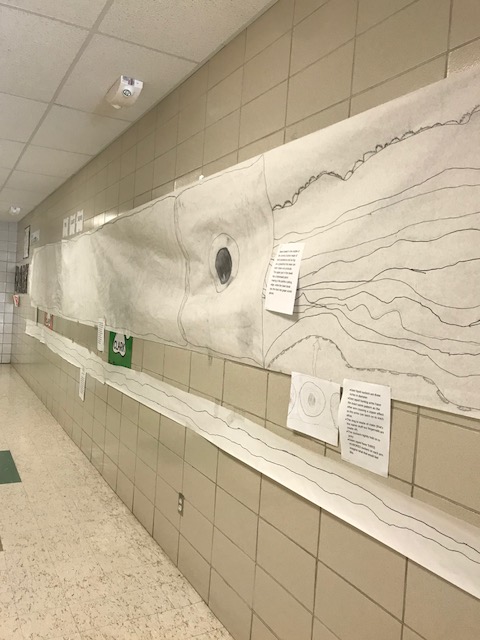
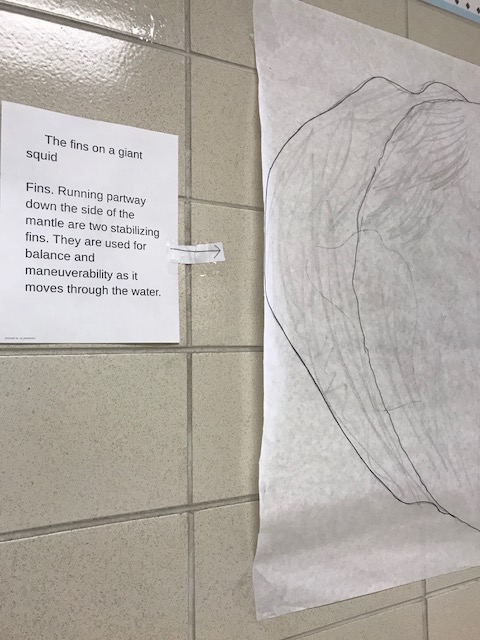
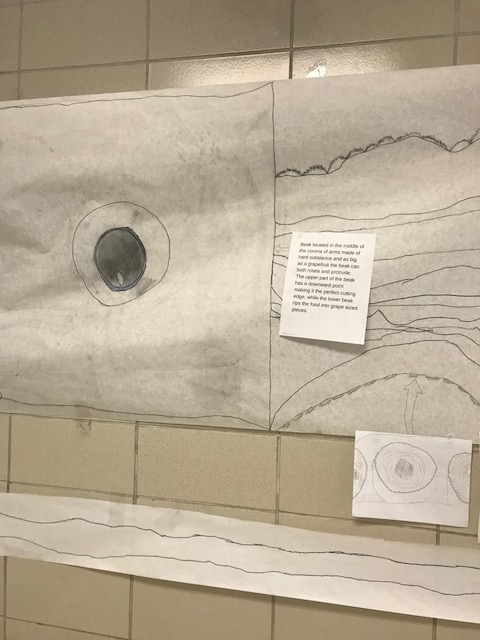
I discuss these issues and more in a chapter on inquiry charts in my new book with Heinemann – Nurturing Informed Thinking.
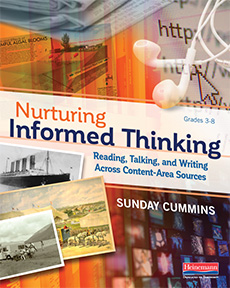
Okay. A BIG THANKS to Sara for sharing stories from her class with me.
Hope this helps.
Sunday
